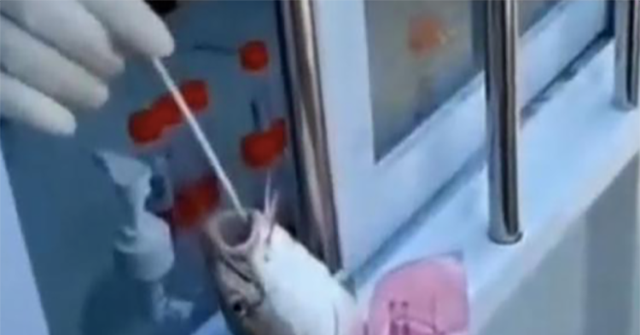
The local government of Xiamen, China, recently ordered municipal workers to test both fishermen and their catch, including “live fish” and crabs, for the Chinese coronavirus out of alleged concern that international fishing activity in the area may have sparked local outbreaks of the virus, the Chinese government-controlled news outlet Sixth Tone reported Thursday.
“[L]ocal authorities confirm that they’re testing fish for the virus. An employee from the Xiamen Municipal Bureau of Ocean Development confirmed the news to Sixth Tone Thursday. He said that performing COVID-19 [Chinese coronavirus] tests on seafood is a common practice, especially since an outbreak of the virus in the island province of Hainan,” the news website reported August 18.
【厦门 #全员核酸 一个都不能少】
【渔民和渔获实行“#人物同检”】台海网报道,厦门集美区,渔民作业期间每天要开展1次核酸检测。渔民和渔获上岸时,实行“‘人+物’同检”,这意味渔船民和渔获都得接受核酸检测。一名厦门市海洋发展局工作人员17日告诉记者“目前厦门市全员都要核酸,渔获也要进行核酸。” pic.twitter.com/WdkACROcKb
— 自由亚洲电台 (@RFA_Chinese) August 18, 2022
Video footage of Xiamen city workers swabbing fish and crabs for the Chinese coronavirus has circulated online in recent days.
Radio Free Asia’s Chinese-language Twitter account posted one such clip on August 18 with the following caption:
Taihai.com reported that in Jimei District, Xiamen, fishermen have to carry out nucleic acid testing once a day during their operations. When the fishermen and their catch come ashore, “the same inspection of ‘people and things’” is implemented, which means that both the fishermen and the catches have to undergo nucleic acid testing.
A staff member of Xiamen Ocean Development Bureau told reporters on the 17th, “At present, all members of Xiamen City need nucleic acid, and the fish must also undergo nucleic acid.”
A disease control worker wearing protective suit collects samples from imported cold-chain fish for COVID-19 testing on August 11, 2021 in Lianyungang, Jiangsu Province of China. (Wang Chun/VCG via Getty Images)
Xiamen is a port city located along China’s southeastern coast directly across the Taiwan Strait from Taiwan. The sovereign island nation of Taiwan is itself situated at the nexus of the East China and South China Seas, making its surrounding region a hub for international fishing and maritime trade.
“Experts from the Chinese Center for Disease Control and Prevention said in an interview with state television in July that fish do not get infected by COVID-19 [Chinese coronavirus], but can be contaminated with it during the catch, transportation, or processing. Such contamination is usually on the surface of the fish,” Sixth Tone relayed on Thursday.
“There is no evidence that animals play a significant role in spreading SARS-CoV-2, the virus that causes COVID-19, to people,” the U.S. Centers for Disease Control and Prevention (CDC) states on its website in a bulletin last updated on July 5.
The U.S. CDC writes the following concerning the “low” risk of animal-to-human transmission of the Chinese coronavirus:
There have been a few reports of infected mammalian animals spreading the virus to people during close contact, but this is rare. These cases include farmed mink in Europe and the United States, white-tailed deer in Canada, pet hamsters in Hong Kong, and a cat in Thailand. In most of these cases, the animals were known to be first infected by a person who had COVID-19.
It’s important to remember that people are much more likely to get COVID-19 from other people than from animals. There is no need to euthanize or otherwise harm animals infected with SARS-CoV-2.
There is a possibility that the virus could infect animals, mutate, and a new strain could spread back to people and then among people (called spillback). More studies and surveillance are needed to track variants and mutations and to understand how SARS-CoV-2 spreads between people and animals.
China’s central government has previously claimed on several occasions that local outbreaks of the Chinese coronavirus — which originated in Wuhan, China, in late 2019 — in Beijing and other cities were allegedly traced to imported frozen food items and air-transported mail carrying the virus.
“In most situations, the risk of infection from touching a surface is low,” according to a U.S. CDC bulletin last updated in November 2021.
“The virus that causes COVID-19 [Chinese coronavirus] can land on surfaces. It’s possible for people to become infected if they touch those surfaces and then touch their nose, mouth, or eyes.” the U.S. public health agency noted.
This post originally appeared on and written by:
null
Breitbart News 2022-08-18 20:57:00
